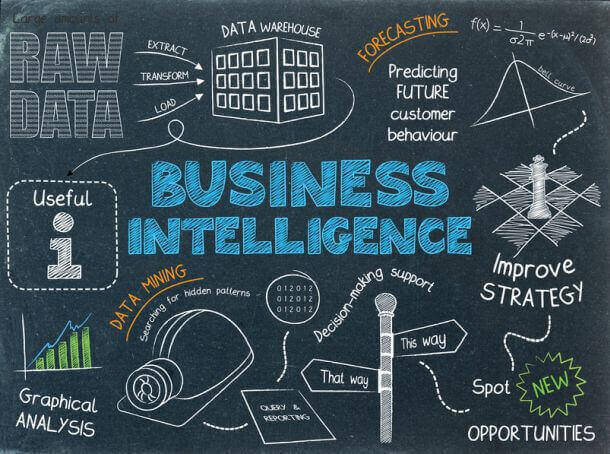No business activity can be carried out without periodic analysis of its results. The well-known Deming-Shewhart cycle PDCA – “Plan-Do-Check-Act” – is a universal model for any business process. Therefore, in order for a company to ensure continuous improvement, it is necessary to constantly accumulate data that reflects the actual state of the business. Such data is drawn up in the form of various reports that serve as the basis for further analysis.
And here the so-called RTs – Reporting Tools come to the fore. In a whirlwind of huge flows of information, RTs enables specialists to collect and organize quickly a variety of reporting information necessary for making timely and effective decisions.
Demand For Reporting Software
We all live in a rapidly developing world. Progress does not stand still and today it is difficult to imagine a situation when specialists spent days, weeks, and sometimes months of their time on collecting information and compiling even the simplest report.
And now something that could only be dreamed of has come true – software products that allow you to generate a report of any volume and any complexity in just a few minutes have appeared.
The software performs successfully the tasks of collecting information from various sources, its systematization, and segmentation, as well as its further presentation in the form of visualized patterns – graphs, tables, diagrams.
At the same time, any software can use additional special tools for collecting, reformatting, and cleaning data before processing it. For example, the OWOX BI Pipeline service can be successfully used for such purposes.
Are Reporting And Business Intelligence Tools Interchangeable?
The vagueness of the terms “reporting tools” (RTs) and “business intelligence tools” (BITs) leads very often to the fact that specialists consider these concepts interchangeably. However, there are still differences between them.
The first. There is a difference in the directionality of the instruments. RTS only states the facts, BITs explain the facts and ways to improve the situation.
Second. There is a difference in the technique of using the tools. RTS is aimed at working with specific datasets, BITs are able not only to combine several datasets but also to show the relationship between them.
The third. There is a difference in a way of reports formatting. RTS creates a fixed format for certain reports, BITs propose a dynamic approach to formatting, so that the causes and consequences of the data being processed can be established.
Analysis Of Reporting Tools And Business Intelligence
1. Graduation
The proposed gradation of reporting tools is a way to combine some of their main types into universal clusters:
– RT of internal analysis. The underlying data used by such RT is collected from internal company sources.
– RT of visualization. The task of such RT is to create visualized patterns (tables, charts, graphs, etc.) to facilitate the perception of information and presentable reports.
– RT of business understanding. By attracting the interactive capabilities of programs, such RT contributes to the generation of know-how in business activities.
– RT of performance. Such RT demonstrates various indicators of business productivity, profitability and other parameters
– RT of entrepreneurship. These RT reflect the level of security and business mobility
– RT of financial activities. The task of the RT is to analyze financial flows and related documented information
2. Positive Aspects
The positive aspects of using RTs are different and they are not limited to those listed below:
– saving time
– using additional features that make work easier
– constant updating of information
– online reporting management
– possibility of automatic archiving
– integration of various activities into a single capsule
3. Selection Criteria
The selection criteria for an RT depend on many factors within the business context. First of all, these are the strategic and tactical goals and objectives of the business. In addition, the choice is influenced by the company’s willingness to use a particular tool, the level of staff competence, the need for ready-made reporting templates, technical equipment, and the financial capabilities of the business.
4. Explore The Best
- Google Analytics. It is considered to be the most common RT. Fast information processing, compatibility with other Google services makes it an indispensable assistant for analysts. The negative side of this tool is the inability to automatically import information from third-party resources.
- Google Data Studio. It is one of the best RT. Setting up dashboards, visualizing data, having a large number of reporting templates – this is not a complete list of the advantages of this tool. A serious disadvantage is the lack of official Google support.
- OWOX BI. It is an indispensable tool for any analyst. This resource is able to accumulate information in unlimited quantities and from any source. It also has the advantage of being able to cleanse, sort, and control the quality of the collected data.
In addition to the free RTs listed above, there are many paid software and Power BI reporting tools.
Some of them are Funnel, Supermetrics, Improvado, Datorama, Looker, Power BI, Tableau. All of them have their own unconditional pros and cons, which can be found by studying the relevant information.
Summary
Obviously, software developers offer a wide range of reporting software and tools today. When choosing a certain RT for your purposes, it should be remembered that the main task of any tool is to generate reporting information in such a way as to provide the business with quick and effective decision-making with a minimum number of errors and with optimal use of time and resources.
Follow Techdee for more informative articles.
